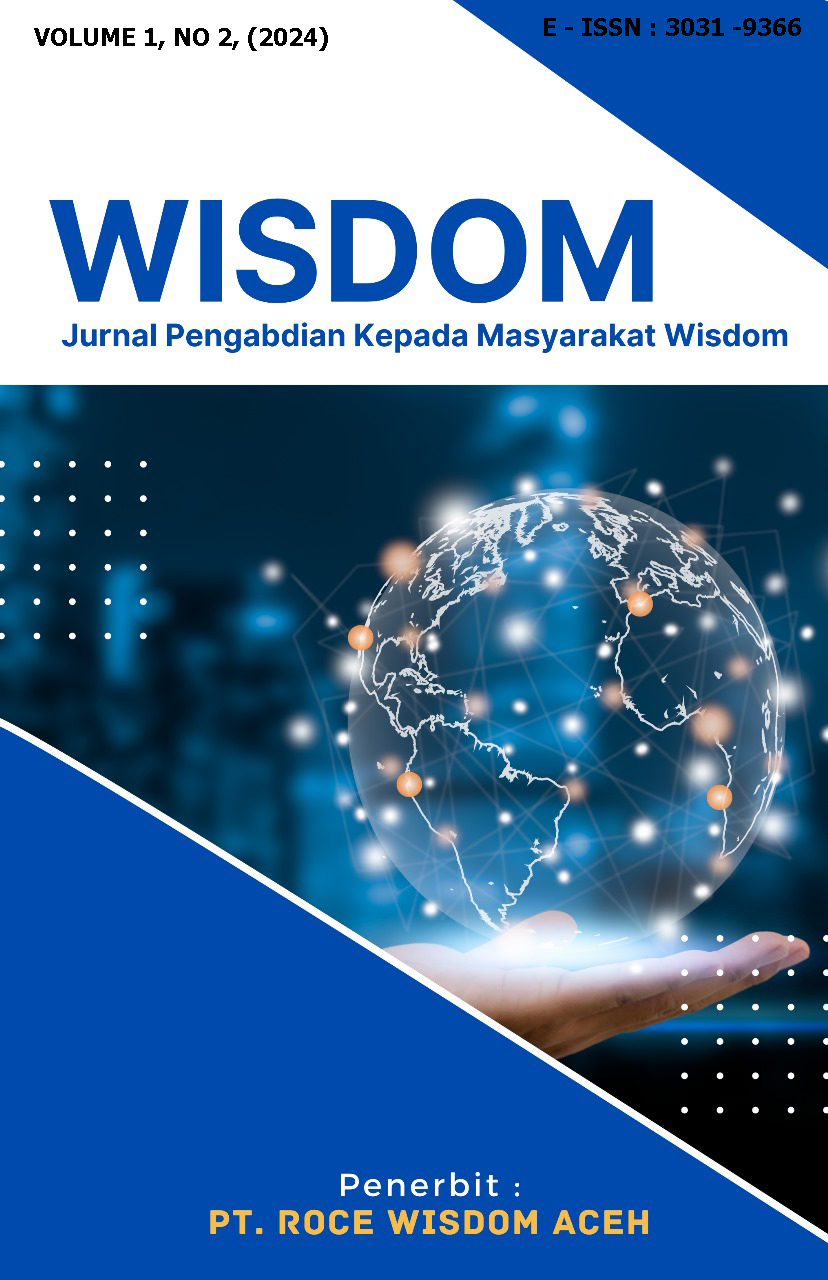TRAINING ON PROCESSING PINEAPPLE FRUIT (Ananas comosus)INTO JAM FOR PKK WOMEN IN GAMPONG PEUNITI,BANDA ACEH
PELATIHAN PENGOLAHAN BUAH NANAS (Ananas comosus) MENJADI SELAI KEPADA IBU-IBU PKK GAMPONG PEUNITIKOTA BANDA ACEH
Keywords:
training, processing, pineapple (Ananas comosus), pineapple jamAbstract
Pineapples are fruit plants commonly cultivated in tropical and subtropical regions. Pineapples possess distinct characteristics in terms of aroma, flavor, and color that are favored by many people. They contain carbohydrates, including sugars that can increase blood sugar levels. Pineapples have high water and fiber content, which can clean the mouth's surface and aid in digestion. The sugars in pineapples include glucose (2.32%), fructose (1.42%), and sucrose (7.89%). The acids found in pineapples are citric acid, malic acid, and oxalic acid, with citric acid being the most dominant, constituting 78% of total acids. The training activity on pineapple jam processing aims to enhance the knowledge of PKK (Family Welfare Movement) mothers in Peuniti Village about the process of producing pineapple-based food products. This activity took place in the courtyard of the Peuniti Village Head Office, Baiturrahman District, Banda Aceh City, and was attended by 20 PKK mothers from Peuniti Village. The implementation method of this activity involved several stages, including (1) socialization, (2) preparation, and (3) Training (demonstration) on pineapple jam processing. The results of this activity showed an improvement in the knowledge and skills of the participants. It is hoped that the knowledge and skills gained will serve as a foundation for meeting the nutritional needs of families while also initiating entrepreneurial efforts.
Downloads
References
Angraeni, D. P., & Rahmawati, A. D. (2014). Efektivitas daya antibakteri ekstrak kulit Nanas (ananas comosus) terhadap pertumbuhan Streptococcus mutans. Universitas Muhammadiyah Yogyakarta.
Ariyanti, D. A. (2020). Manfaat Tanaman Nanas Kerang untuk Kesehatan Salah-Satunya Meringankan-Sakit. Retrieved from Ringtimes Banyuwangi: https://ringtimesbanyuwangi.pikiran-rakyat.com/gayahidup/pr-17668377/manfaat-tanaman-nanas-kerang-untuk-kesehatan-salah-satunyameringankan-sakit-tbc?page=3.
Gaffar, R., Lahming, & Rais, M. (2017). Pengaruh Konsentrasi Gula Terhadap Mutu Selai Kulit Jeruk Bali (Citrus maxima). Jurnal Pendidikan Teknologi Pertanian, 3, 117-125.
Herdhiansyah, Dhian, Fitrawaty, Tamrin, & Asriani. (2022). Penerapan Sistem GMP (Good Manufacturing Practices) pada Usaha Mikro Tahu Tempe Benjo di Desa Lambusa Kabupaten Konawe Selatan. Jurnal Warta Industri Hasil Pertanian, 39(1) 9 – 15.
Herdhiansyah, Dhian, Gustina, AbPatadja, & Asriani. (2021). Kajian Penerapan Good Manufacturing Practices (GMP) pada Pengolahan Keripik Pisang. Jurnal Teknologi Industri Pertanian, 15 (3): 845-853. .
Irfandi. (2005). Karakterisasi Morfologi Lima Populasi Nanas (Ananas comosus L Merr.). Skripsi Sarjana Pertanian pada Program Studi Hortikultura. Fakultas Pertanian. Institut Pertanian Bogor.
Palupi. (2007). Pengaruh Pengolahan Terhadap Nilai Gizi Pangan. Modul eLearning ENBP. Departemen Ilmu & Teknologi Pangan- IPB.
Yenrina, R. N., Hamzah, & Zilvia, R. (2009). Mutu selai lembaran campuran nanas (Ananas comusus L.) dengan jonjot labu kuning (Cucurbita moschata). Jurnal Pendidikan dan keluarga, 1(2), 33-42.
Yowandita, R. (2018). Pembuatan Jelly Drink Nanas (Ananas comosus L.) Kajian Tingkat Kematangan Buah Nanas dan Konsentrasi Penambahan Karagenan Terhadap Sifat Fisik, Kimia dan Organoleptik. Jurnal Pangan dan Industri, 6(2), 63-73.
Downloads
Published
Issue
Section
License
Copyright (c) 2024 Puput Isnani, Abdul Malik, Muhammad Kamal Muda, Adil Azrial Akbar, Elvrida Rosa, Savitri (Author)

This work is licensed under a Creative Commons Attribution-ShareAlike 4.0 International License.













